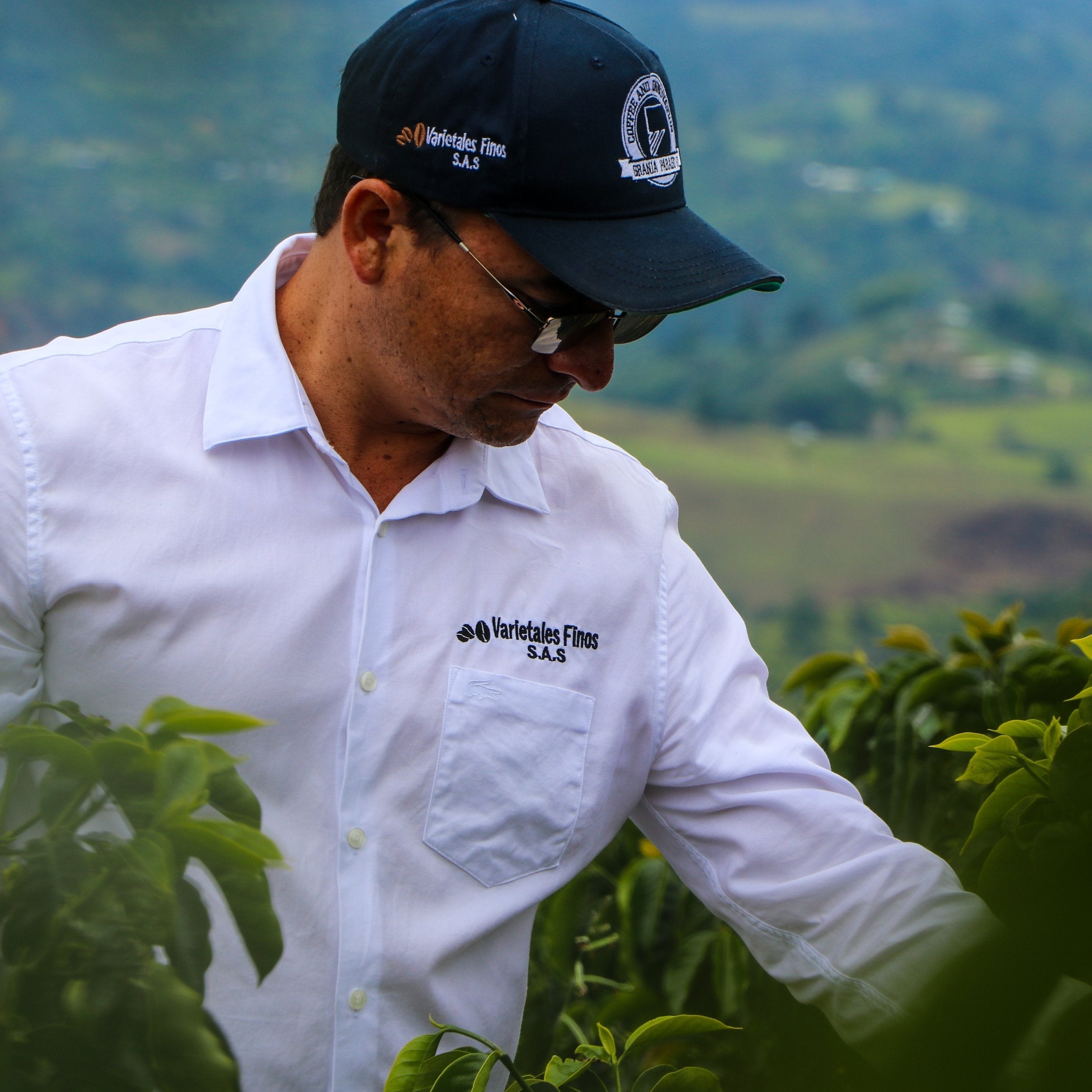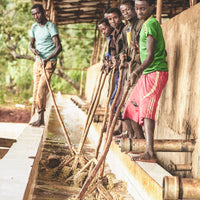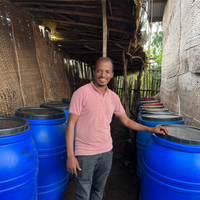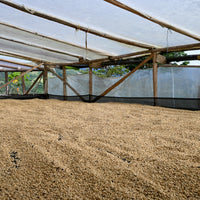Origin : Colombia
Region: Piendamo, Cauca
Altitude: 1900masl
Producer: Wilton Benitez
Variety: Red Bourbon
Process: Anaerobic Thermal Shock Washed/Anaerobic Thermal Shock Washed EA Sugarcane Decaf
Tasting notes: Clean, syrupy and sweet with notes of Turkish delight, raspberry and tropicals.
This is Passports very own creation. We have 50/50 blended the full caffeine variety with the decaf variety to create a "LoCaf" blend so you get the best of both worlds!
This coffee comes from the region of Cauca in south of Colombia. Cauca is relatively flat compared to other Colombian growing regions which means the coffee produced benefits from more consistent conditions. This Red Bourbon varietal is a mix from farmers nearby Granja Paraiso 92 owned by Wilton Benitez.
Wilton Benitez is a highly specialised Colombian coffee producer with a lifetime of experience in the production and processing of exotic coffee, with a plethora of awards for the quality of his coffees. Today Wilton has a processing plant in the Department of Cauca and two small farms (one in Cauca and the other in Risaralda). His farms meet the highest standards of quality and control and social practice. Granja Paraíso 92 is a family farm that has different varieties such as Java, Bourbon Pink, Geisha, Pacamara, Caturra, Tabi, Castillo, Supremo and Colombia. They use highly innovative cultivation systems such as terraces and drip irrigation. It has its own laboratories to calculate all the details from shade to nutrition with scientific efficiency, all aimed at producing incredibly unique and aromatic coffees.
This lot is a 'controlled washed' fermentation and uses coffee cherries that Wilton purchases from neighbouring farmers.
The processes applied to the different coffees start from a strict selection, sterilisation and characterisation of the cherry. Next is the first phase of controlled anaerobic fermentation, where a specific microorganism is added for each process. After that, the coffee is pulped and subjected to a second fermentation phase which is followed by a bean sealing process that is carried out through impacts of hot and cold water to improve the organoleptic conditions of the coffee.







